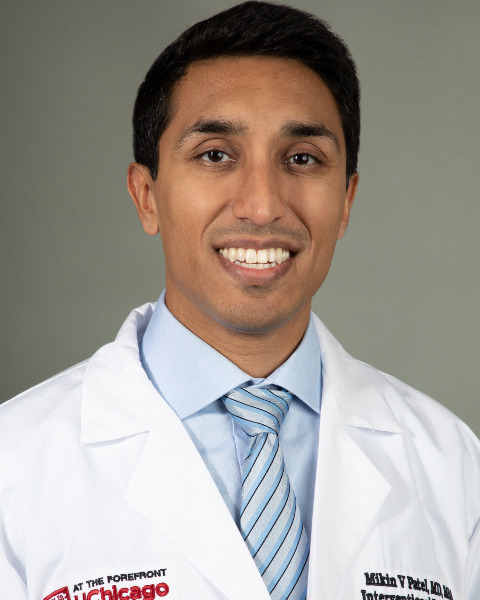SIR 2025
Interventional Oncology
Scientific Session
Transcatheter CT Hepatic Arteriography Guided Percutaneous Microwave Ablation for Treatment of Small Hepatocellular Carcinoma: A Comparative Analysis with Conventional CT-guided Ablation and Radiation Segmentectomy

Qian Yu, MD (he/him/his)
Resident
University of Chicago, United States- ZA
Zaynab Ahmed, None
Student
University of Chicago, United States - DK
Daniel Kwak, MD, PhD
Radiology Resident
University of Chicago, United States 
Mikin V. Patel, MD
Assistant Professor of Radiology
Department of Radiology, University of Chicago, United States
Divya Kumari, MD
Assistant Professor
University of Chicago Hospitals, United States- YI
Yousuf Islam, None
student
University of Chicago, United States - ZL
Zheng Feng Lu, PhD
Professor
University of Chicago, United States 
Rakesh C. Navuluri, MD, FSIR
Associate Professor
University of Chicago, United States
Thuong G. Van Ha, MD, FSIR
Professor
The University of Chicago, United States
Osman Ahmed, MD, FSIR
Associate Professor of Radiology
University of Chicago, United States
Presenting Author(s)
Author/Co-author(s)
During percutaneous thermal ablation for hepatocellular carcinoma (HCC), small tumors can be difficult to visualize using conventional non-contrast computed tomography (CT) imaging and ultrasound. Selective hepatic arteriography can enhance their visibility with small volume intra-arterial contrast, enabling real-time tumor localization and immediate post-intervention assessment of ablation zone coverage. This study aims to evaluate safety and efficacy of transcatheter CT hepatic arteriography (Angio-CT) guided percutaneous microwave ablation (MWA) for small HCC and compare with conventional CT guidance and radiation segmentectomy (RS).
Materials and Methods:
A single institutional retrospective review was performed to include HCC < 3cm treated with Angio-CT guided MWA, conventional CT guided MWA, and RS from June 2019 to July 2024. Hepatic arteriography was performed after transarterial catheterization in an Angio-CT hybrid suite, in order to improve target visualization and confirm complete ablation coverage. Conventional CT guided ablation was performed with or without ultrasound. RS was performed using glass microspheres with a target dose of >250Gy to no more than two hepatic segments. Target-lesion radiologic response was evaluated according to modified RECIST criteria on follow-up contrast enhanced CT or magnetic resonance imaging. Target-lesion progression-free survival (PFS) was calculated using the Kaplan-Meier method.
Results:
A total of 32 tumors (mean diameter: 1.50 ± 0.40cm) were treated with Angio-CT guided MWA. No major procedure-related adverse events occurred. Compared to conventional CT guided MWA (n=49), Angio-CT guidance demonstrated a significantly higher 3-month complete response rate (79.6% versus 100%, p=0.006) and prolonged PFS (median survival time: 33 months versus not reached, p=0.0037) with 2-year response rate of 63.1% and 94.7%, respectively. Compared to RS (n=61, 2-year response rate: 82.4%), Angio-CT guided ablation demonstrated similar PFS (median survival time was not reached in either group, p=0.150). No significant difference was observed between tumors treated by Angio-CT guided MWA or ablative dose RS (target dose >400Gy; n=22; median survival time was not reached in either group, p=0.0889).
Conclusion:
Angio-CT MWA for HCC < 3cm resulted in higher initial response and prolonged PFS when compared with conventional CT guidance. Compared to RS, Angio-CT MWA appeared to be associated with higher radiologic response than RS, although not statistically significant.


.jpg)